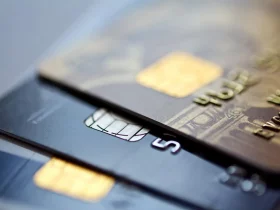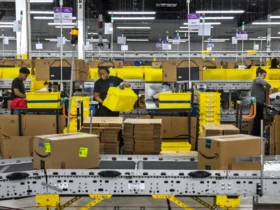Navigating the grocery aisles as a new mom or someone caring for young children can be a challenge. That’s where WIC benefits come in, offering a helping hand to purchase nutritious foods. But what about when life’s hustle and bustle make it hard to get to the store?
I’ve often wondered if modern conveniences like Instacart could mesh with the WIC program. After all, Instacart’s wide selection of WIC-approved foods is tempting, and it’d be a huge time-saver. Let’s dive into whether you can tap into this convenience with your WIC benefits.
Overview of WIC Benefits
What is WIC?
I’m sure you’ve heard of WIC, but let’s get into what it really stands for. WIC is short for Women, Infants, and Children. It’s a federal assistance program specifically designed to safeguard the health of low-income pregnant, postpartum, and breastfeeding women, as well as infants and children up to age five who are at nutritional risk. By offering nutritional education, healthcare referrals, and a bundle of specific nutritious foods, WIC plays a vital role in improving the lifelong health and nutrition of these vulnerable groups.
One key aspect of WIC is its focus on improving the health of low-income families. The goal isn’t just to provide food but to ensure that recipients have access to the types of food that promote health during critical growth periods, such as pregnancy and early childhood.
Eligible Products and Restrictions Under WIC
When it comes to shopping with WIC benefits, it’s important to know which foods you can get. The program has a pre-determined list of WIC-approved foods that align with its mission of promoting health. These include high-iron cereals, calcium-rich milk, and a range of fruits and vegetables which support a balanced diet.
Below is a rundown of the categories of foods typically allowed:
- Dairy: Milk, cheese, and yogurt
- Grains: Bread, cereals, and whole wheat pasta
- Proteins: Eggs, canned fish, and tofu
- Fruits and Vegetables: Fresh, canned, and frozen options
- Baby Foods: Iron-fortified infant formula, baby cereal, and jars of baby food
However, not all items in these categories are eligible. For instance, luxury dairy items like imported cheese or products high in added sugars may not be approved. It’s likewise essential to keep in mind that organic baby foods usually don’t make the cut.
There are definite restrictions too. WIC won’t cover non-essential items such as beer, wine, liquor, cigarettes, or tobacco. Moreover, vitamins and medicines, foods consumed on the premises, and non-food items like soaps and paper products are excluded. Here’s a detailed list of WIC food packages from USDA, which outlines the specific foods you’re allowed to purchase.
For shoppers using WIC benefits, look out for WIC shelf tags that mark eligible items in stores. They’re your quickest guide to navigating the aisles without confusion. Remember, any non-WIC items will need another form of payment, so it’s best to plan your shopping list accordingly to make the most of your benefits.
Alright, so we’ve covered a good deal about what WIC is and the kinds of products you can pick up with your WIC benefits. Now, having clarity on these allowances and restrictions helps ensure that you can shop effectively and make the most of the benefits for you and your family. Moving forward, let’s delve into the practicalities of using WIC benefits for grocery shopping – after all, knowing is only half the battle, it’s the doing that counts.
Instacart’s Policy on WIC Benefits
Current Stance of Instacart on Accepting WIC
Instacart currently does not accept WIC benefits for the purchase of groceries. As one of the largest online retailers in the United States, Instacart caters to a vast customer base with an extensive selection of products. Despite this, it’s notable that WIC benefits are formatted for use in physical stores rather than online platforms. Since WIC-approved foods are clearly marked in stores, beneficiaries can easily identify which items they can purchase with their benefits. Unlike SNAP (Supplemental Nutrition Assistance Program) which has seen pilot programs for online use, as mentioned by the USDA, WIC has not yet transitioned to support online transactions like those facilitated by Instacart.
Challenges and Considerations for WIC Integration
Integrating WIC benefits into the Instacart platform faces several challenges. Primarily, since WIC benefits are administered at the state level, any changes to accepted purchasing methods need federal approval. Variations in program implementation from state to state add complexity to creating a universally compatible system online.
Moreover, for WIC recipients, the importance of distinguishing WIC-eligible items presents a significant hurdle. Online platforms need clear labeling and an accurate system to prevent the purchase of non-approved items with WIC benefits. The National WIC Association has considered innovative solutions such as curbside pickup, but as Brian Dittmeier, senior public policy counsel with the National WIC Association, explained, it requires USDA coordination and approval which has more details explored in his discussion on Insider.
Adapting the WIC program for online services like Instacart could offer convenience and safety for families. Voices from the community are growing louder for change, suggesting designated shopping hours or online ordering for WIC users. Steps in this direction could significantly ease the shopping experience for those relying on WIC for nutritious food access.
On the other hand, using food stamps on Instacart presents a highly convenient option for beneficiaries, streamlining the grocery shopping experience. This integration allows users to apply their food stamp benefits to eligible purchases directly through the Instacart app or website, eliminating the need for physical store visits. With Instacart’s user-friendly interface, users can easily browse and select from a wide range of qualifying products, ensuring they can access nutritious food while adhering to the food stamp program’s guidelines. For that reason, I would recommend switching from the WIC program to the SNAP one, as you will have much more opportunities-
Alternative Ways to Utilize WIC Benefits
Traditional In-Store Use of WIC Benefits
When I think about WIC benefits, the most conventional method of using them comes to mind. In-store purchases are a hallmark of the WIC program. I’m familiar with the drill: heading into a physical store, filling the cart with WIC-approved foods, and then presenting my WIC EBT card to the cashier for payment. It’s a system that’s consistent nationwide, albeit each state might have its unique list of approved items. While this method may seem dated in our rapidly digitizing world, it ensures direct access to nutritious foods for those in the program.
Other Online Platforms Accepting WIC
Despite the common in-person approach, people are increasingly keen on finding online solutions for WIC purchases, especially with the growing trend of grocery delivery services. For those searching for alternatives, there’s promising news: some states are exploring online options. For instance, the Nevada Department of Health and Human Services has plans to launch a grocery delivery service specifically for WIC participants—this could well set a precedent for other online platforms to follow suit. Now, while Instacart itself may not accept WIC, there could be other online services emerging that will cater to WIC recipients. I keep an eye out for updates from authoritative sources like the United States Department of Agriculture that might signal new developments for WIC’s integration into online shopping.
It’s important to consider that any shift towards online or alternative platforms would need to maintain the strict guidelines set forth by WIC. This ensures that the nutritional needs of pregnant women, new mothers, and young children are met without compromising on the approved food items. So, whether there’s an expansion into online shopping or innovative in-person services like curbside pickup, it’s crucial that these platforms uphold the program’s integrity and effectiveness. After all, the heart of the WIC program lies in fostering the health and nutrition of some of the most vulnerable populations.
The Future of WIC and Online Grocery Shopping
Emerging Trends in Digital WIC Transactions
Retail landscapes are evolving and alongside them, the possibilities for digital transactions. WIC, traditionally used in physical stores, has begun to witness a shift with the increasing need for online shopping options. During the pandemic, grocery shopping trends shifted massively, exemplified by the significant jump in online grocery orders. Despite this, I’ve learned that WIC beneficiaries like Erica still need to travel long distances and navigate the in-person shopping experience, which isn’t just inconvenient – it’s become a health concern.
Yet, there’s movement on the horizon. While the USDA has been giving states flexibility to manage WIC programs, digital WIC transactions are relatively uncharted territory. However, with the existing infrastructure of SNAP’s online ordering systems, there are proofs of concept to look towards for inspiration.
In response to COVID-19, certain policy adjustments have facilitated remote screening for beneficiaries, indicating a willingness to embrace digital solutions where necessary. I can see this as a precursor to broader adoption of online WIC services, potentially transforming how beneficiaries shop for their groceries.
Potential Developments in WIC Accessibility Online
The future of WIC may very well include broader access to online grocery shopping. Given the success of SNAP’s online purchasing pilot program, it’s not a stretch to imagine a similar path for WIC. This would be particularly important for those like Joe Wright from Michigan, who’ve expressed the need for more secure shopping options for WIC users. In a tweet, Joe urged for adaptations like online ordering to ensure safety for families using WIC benefits.
Moreover, politicians are acknowledging the importance of online accessibility for welfare programs. For instance, candidates like Michelle Andrews advocate for implementing successful online ordering programs similar to those in other states for Baltimore’s low-income families. Such changes could pave the way for WIC to follow suit, with the right push and federal approval.
While USDA’s sign-off is essential, the established demand for online shopping and heightened community support creates a fertile ground for change. Looking ahead, I’m optimistic about the potential for WIC to adapt to today’s digital shopping era, providing needed safety and convenience for beneficiaries.
Tips for WIC Participants Using Online Grocery Services
Maximizing Benefits with Available Options
When it comes to using WIC benefits for online grocery shopping, options may seem limited. However, that doesn’t mean you’re without resources. First and foremost, it’s pivotal to stay updated on your state’s policies regarding WIC online transactions. Some states are moving towards integrating WIC with digital shopping platforms, following in the footsteps of SNAP’s online success.
To get the most out of your WIC benefits:
- Keep tabs on official WIC program updates that might reflect new online shopping integrations.
- Reach out to customer support on popular grocery platforms to inquire if they have considered or plan to accommodate WIC participants.
- Research local initiatives or shops that have piloted WIC online purchasing programs.
Remember, even if mainstream online retailers aren’t currently WIC-friendly, you might discover local health food stores or community cooperatives that have more flexible options for placing orders online.
Navigating Online Grocery Shopping with WIC Restrictions
Navigating online grocery platforms as a WIC participant isn’t always straightforward. The restriction on purchasing only WIC-approved items translates into carefully reading product descriptions and labels when shopping online. It’s crucial that you’re familiar with what items are covered under your benefits so that you’re prepared when browsing virtual aisles.
Bonus tip: Before making any online grocery transaction, verify whether the retailer can split the payment method if part of your order is not WIC-eligible. That way, you can pair another form of payment for non-WIC items.
Always ensure you check with the online grocery service for any additional service or delivery fees, as these are typically not covered by WIC benefits. You’ll need to plan to cover these costs separately, likely via debit or credit card.
Here are a few more strategies to effectively navigate online grocery shopping:
- Use the platform’s search filters to find WIC-approved items easily.
- Join online communities or forums for WIC participants where you can share tips and information about WIC-friendly shopping options.
- Look for clear labeling on the grocery platform that designates which items are WIC eligible.
While progress is being made towards integrating WIC with online groceries, current limitations require a bit of creative strategy and continued advocacy for wider accessibility. In the meantime, these tips should help you to use your benefits as effectively as possible within the digital marketplace. With 42 million Americans depending on SNAP, and a similar need for WIC participants, retailers and policymakers are increasingly urged to reconcile these essential services with the conveniences of modern technology.
H2: Advocacy and Efforts to Expand WIC Accessibility
Current Initiatives to Include WIC in Online Platforms
In recent years, I’ve observed a gradual shift toward integrating WIC benefits with online grocery platforms, responding to a clear need for greater accessibility. Instacart’s Health Initiative, for instance, is an ambitious approach set to tackle the hurdles faced by special supplemental programs. This initiative aims to bring nutritious food closer to underserved communities and aligns with the National Strategy on Hunger, Nutrition, and Healthy goals.
The reality is that 42 million Americans depend on SNAP, and the need to bridge WIC into the digital shopping realm is evident. Current initiatives are making headway, with some states testing pilot programs that allow online WIC transactions, hinting at what could become a nationwide adaptation.
Social media has also become a powerful tool in amplifying consumer voices. Take, for instance, Michigan resident Joe Wright, who highlighted the need for WIC-friendly shopping options online. His advocacy reminds us that public demand can spark significant changes in policy.
How Consumers Can Advocate for Change
As an active participant in online shopping communities, I know firsthand that every voice matters. Consumers play a crucial role in advocating for expanded WIC accessibility. Here’s how you can make a difference:
- Engage on Social Media: Like Joe Wright, use platforms such as Twitter to call for changes in your state or community. Your stories can highlight the everyday challenges and put a spotlight on the need for more inclusive services.
- Support Policy Changes: Keep an eye out for legislature aimed at expanding WIC access online. Lending your support could tip the scale in favor of more progressive policies.
- Be Part of Community Forums: Online forums and WIC participant communities are where ideas gain momentum. Join discussions, share experiences, and don’t be shy about urging retailers and policymakers to take action.
Every step taken towards the expansion of WIC online shopping options is paving the way for better nutritional access for millions. Your advocacy isn’t just a drop in the bucket—it’s a ripple that can grow into a wave of positive change.
Legal and Regulatory Aspects of WIC Online
Government Regulations on WIC Online Purchases
When it comes to using WIC benefits online, it’s not as straightforward as one might hope. Current regulations almost unanimously require WIC services to be utilized in a traditional retail setting. This means I have to select my groceries in person and then proceed to check out with an actual cashier. Brian Dittmeier, senior public policy counsel with the National WIC Association, has expressed hope that the USDA will collaborate with state WIC agencies to usher in more innovative strategies like curbside pickup, which could significantly streamline the shopping process for WIC families.
State-led changes are possible, yet they hinge on federal approval, considering that WIC programs vary by state and retailer. The overarching control really lies with the USDA. If states or retailers want to push the needle towards online accessibility, they still need that crucial USDA sign-off.
The conversation around this topic gained traction on social media, where individuals such as Michigan resident Joe Wright called for WIC-only shopping hours or online ordering options to ensure safety for WIC families during the pandemic. This public discourse amplifies the urgency for regulatory changes.
Compliance and Verification Challenges
Switching to an online system for WIC purchases isn’t just about bureaucratic red tape; there are real hurdles in compliance and verification. Ensuring that an online system can accurately process WIC transactions while adhering to program rules is no small feat. It’s critical to establish a setup that can handle the complexities of WIC-approved items and prevent the purchase of restricted products like alcohol or tobacco.
One of the main problems is that existing systems weren’t designed with WIC online shopping in mind. Nevada’s push to launch a grocery delivery service for WIC participants encountered obstacles because the backend wasn’t in place to handle benefit transfers for home deliveries. Partnering with third-party companies such as Instacart might appear as a solution; however, configuring the necessary backend programs can be time-consuming, thus delaying what is needed immediately.
The statistics can be stark as well. Despite an upward trend in program enrollment, the redemption rate—that is, the percentage of people actually using their benefits—saw a drop from 67 percent to 53 percent in June. This is a clear indicator of the difficulties faced by families when it comes to accessing their WIC benefits in the current scenario.
Fostering an environment where verifications are seamless and compliant with government guidelines will be essential to the successful integration of WIC benefits into online shopping platforms. Until these challenges are addressed, families like Erica’s, whose vulnerable health condition makes in-person shopping a risk, will continue to face obstacles that could be mitigated with more flexible WIC purchasing options.
The move toward online accessibility within the WIC program is multi-faceted and will require continuous dialogue among public policy experts, government authorities, and the public they serve. As I explore the complexities of this integration, it’s evident that technological innovation must be matched by regulatory flexibility and a commitment to safety and convenience for vulnerable populations.
Conclusion: The State of WIC on Online Grocery Platforms
I’ve explored the complexities of bringing WIC benefits online and it’s clear there’s still work to be done. It’s crucial for everyone involved to push for change that can make a real difference in the lives of those who rely on WIC. I’m hopeful about the future as we continue to discuss and develop solutions that could allow for the integration of WIC into services like Instacart. Adapting to the digital age isn’t just convenient—it’s necessary to support families in accessing the nutrition they need. Let’s keep the conversation going and work towards a system that works for everyone.













